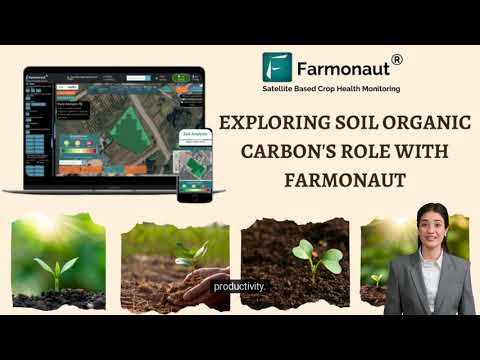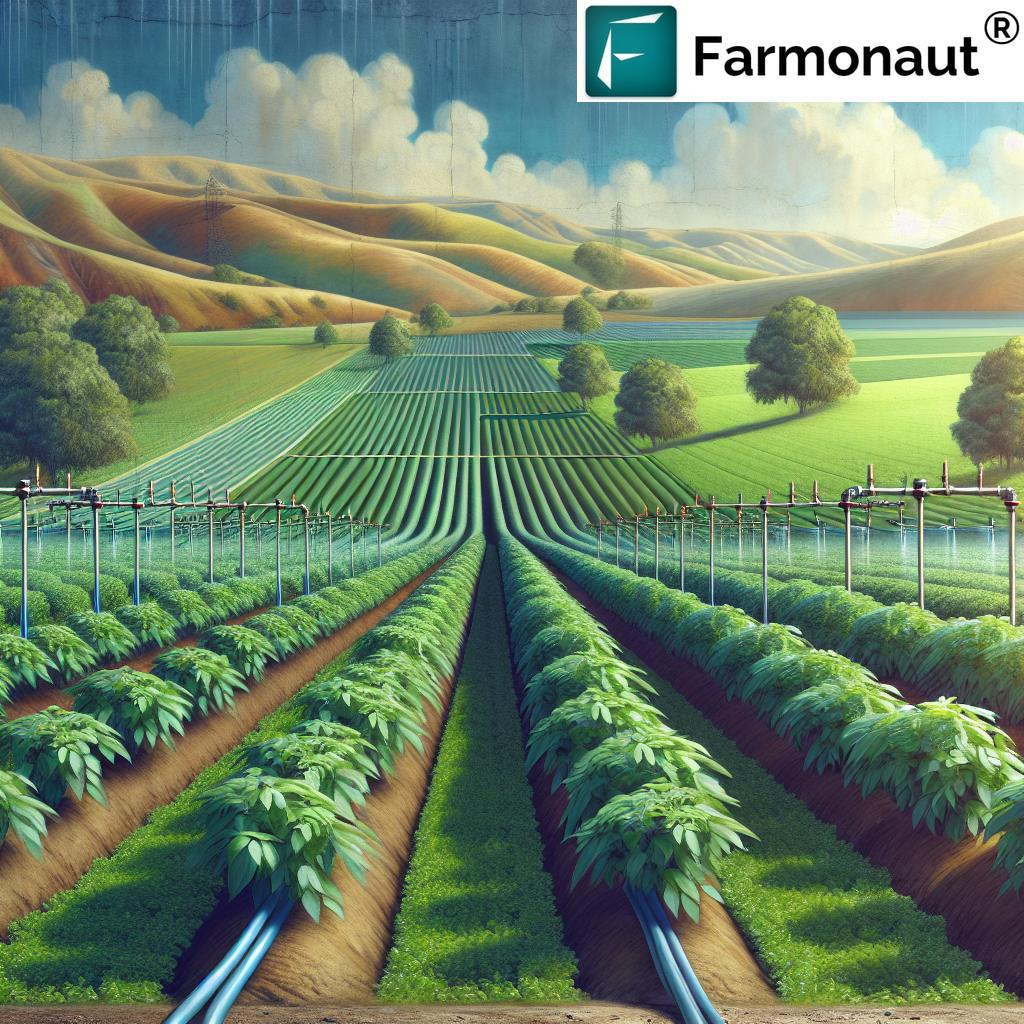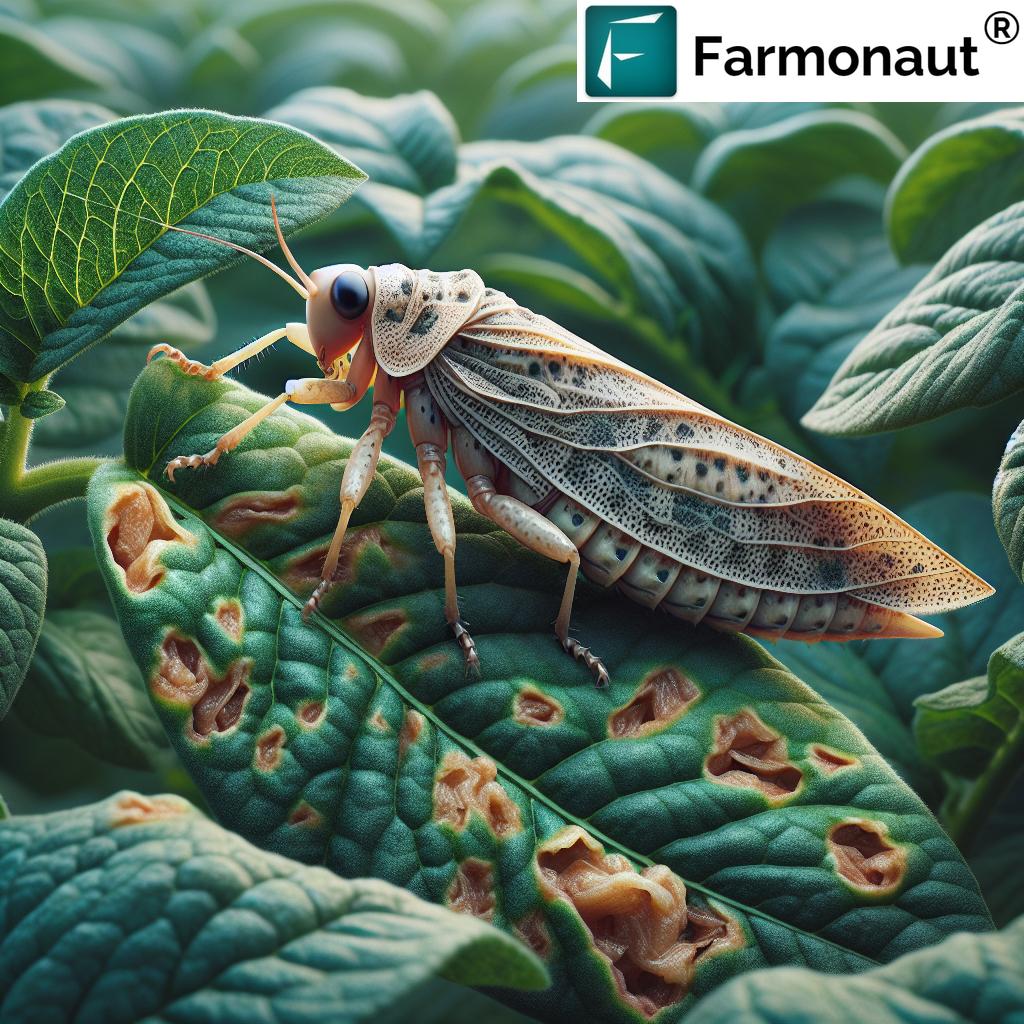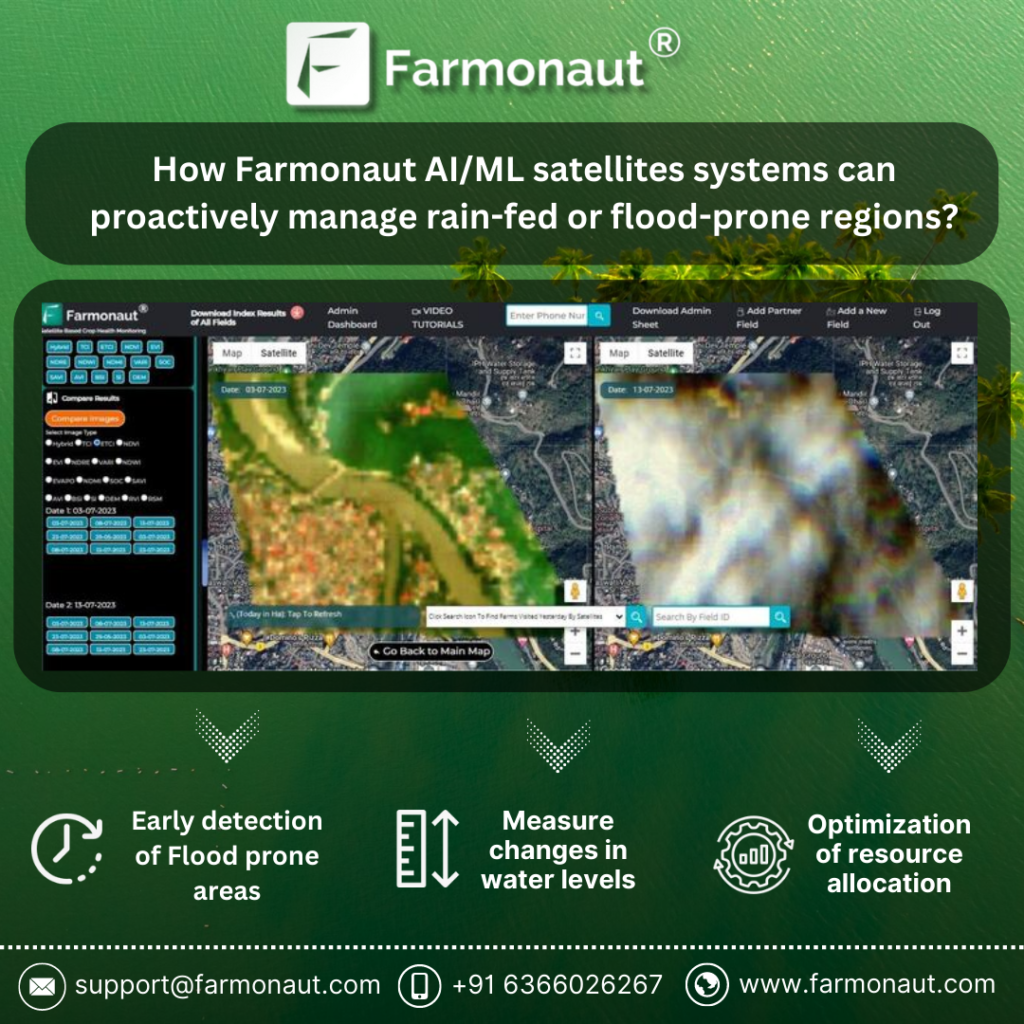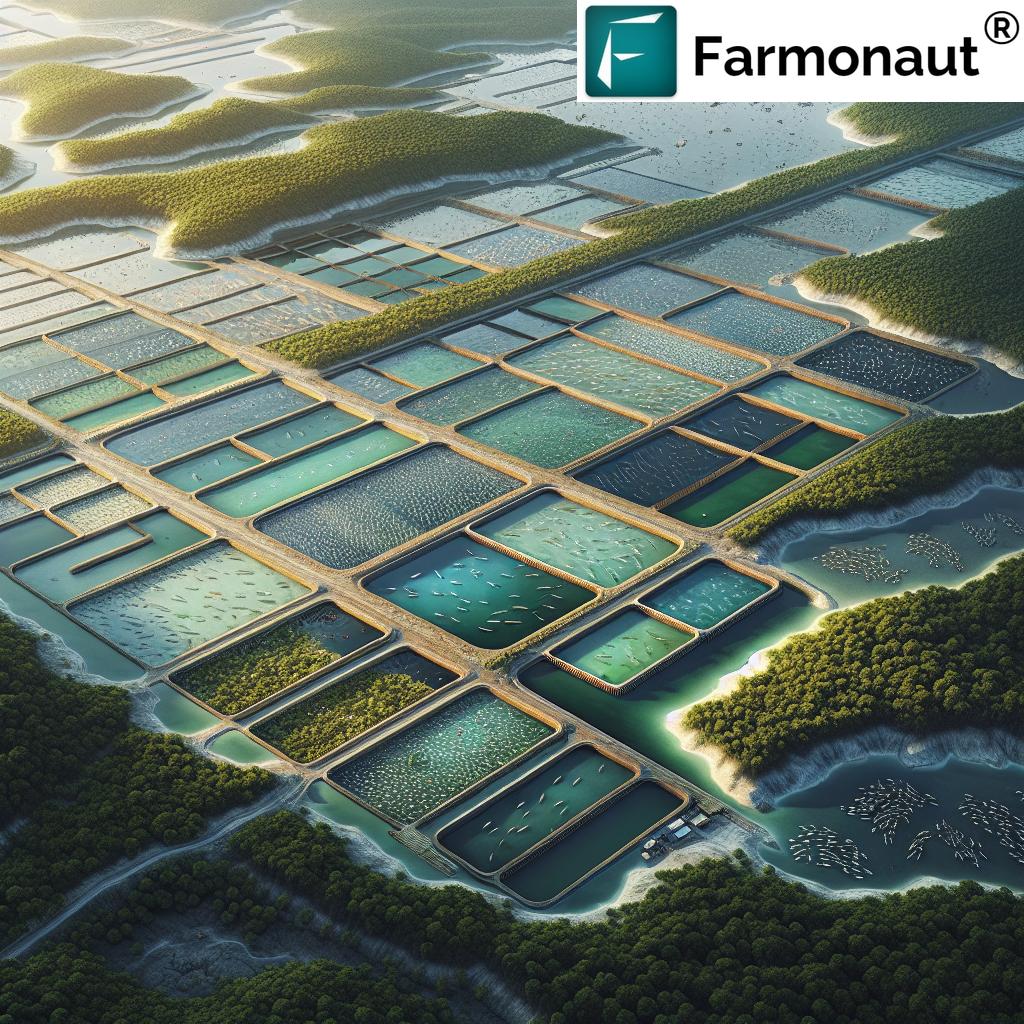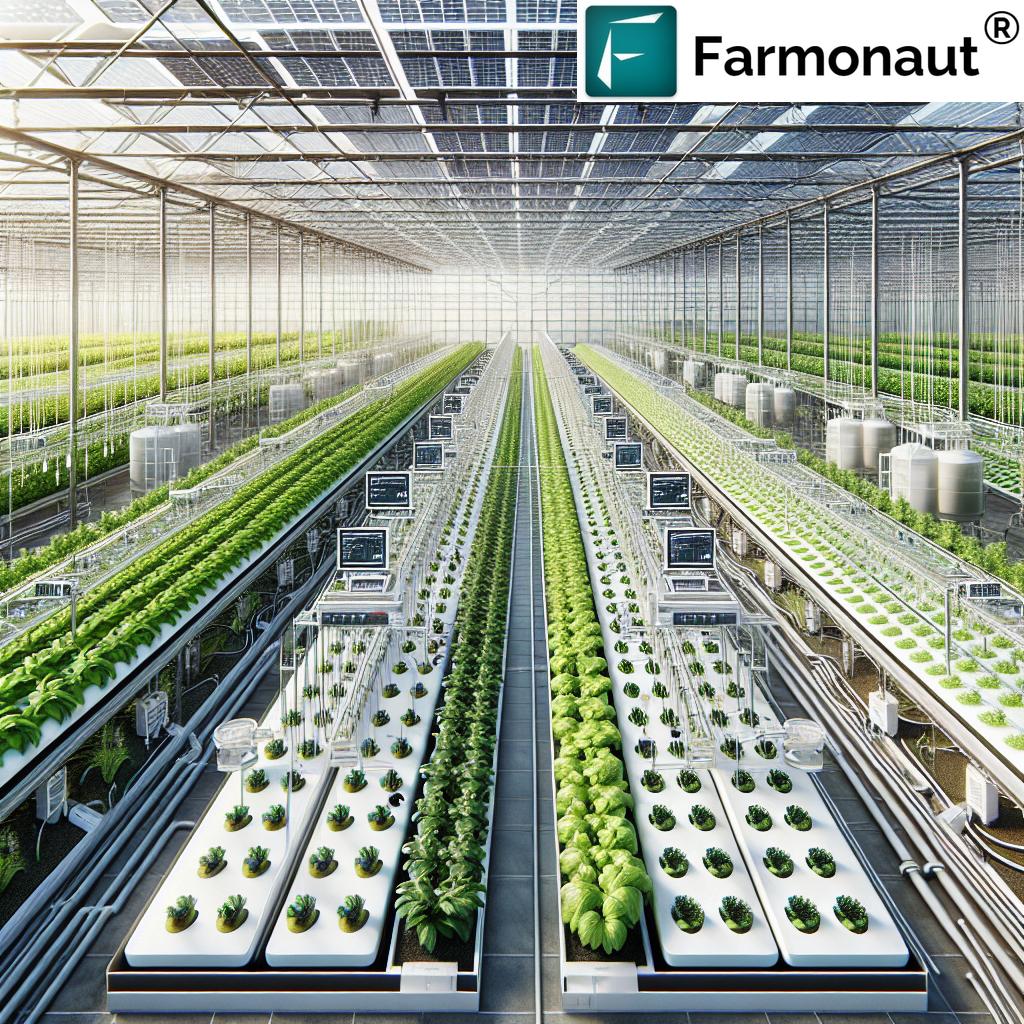Mastering Potato Farming: Expert Guide to Soil Health and Sustainable Cultivation Techniques

“Implementing reduced tillage in potato farming can increase soil organic matter by up to 25% over 5 years.”
Welcome to our comprehensive guide on mastering potato farming through expert soil health management and sustainable cultivation techniques. As we delve into the world of innovative potato farming practices, we’ll explore how these methods can revolutionize your crop yields while promoting long-term sustainability in modern agriculture.
In this blog post, we’ll cover crucial aspects of land preparation, soil health management, and the latest advancements in precision agriculture technology for potato growers. Our goal is to equip you with practical advice and cutting-edge strategies to boost your potato production while ensuring the health of your soil for years to come.
The Importance of Soil Health in Potato Farming
Before we dive into specific techniques, let’s understand why soil health is paramount in potato farming:
- Healthy soil provides essential nutrients for potato growth
- Good soil structure improves water retention and drainage
- Healthy soil promotes beneficial microbial activity
- Well-maintained soil reduces the risk of soil-borne diseases
At Farmonaut, we recognize the critical role that soil health plays in successful potato cultivation. Our satellite-based farm management solutions offer real-time insights into soil health, helping farmers make informed decisions about their cultivation practices.
Innovative Land Preparation Techniques for Potato Farming
Proper land preparation is the foundation of successful potato farming. Let’s explore some innovative techniques that can enhance your soil health and potato yields:
1. Minimizing Soil Compaction
Soil compaction can severely impact potato growth and yield. Here are some strategies to minimize compaction:
- Use controlled traffic farming to limit machinery movement
- Implement low ground pressure tires on farm equipment
- Avoid working in wet soil conditions
- Use cover crops to improve soil structure
2. Implementing Reduced Tillage
Reduced tillage practices can significantly improve soil health. Consider these approaches:
- Strip-tillage: Only till the planting row, leaving inter-row areas undisturbed
- Vertical tillage: Use vertical tillage tools to minimize soil disturbance
- Chisel plowing: Break up compacted layers without inverting the soil
3. Utilizing Cover Crops
Cover crops play a crucial role in maintaining soil health between potato rotations. They offer numerous benefits:
- Prevent soil erosion
- Improve soil organic matter content
- Enhance soil structure and water-holding capacity
- Suppress weeds and reduce pest pressure
Choose cover crops that complement your potato rotation, such as rye, oats, or legumes. Proper timing of cover crop termination is crucial to maximize benefits without interfering with potato planting.
Optimizing Bed Formation and Seed Placement
Proper bed formation and seed placement are critical for optimal potato growth. Consider these techniques:
- Use GPS-guided equipment for precise bed formation
- Implement raised beds to improve drainage and soil warming
- Ensure consistent seed depth and spacing for uniform emergence
- Consider using seed treatments to protect against soil-borne diseases
Farmonaut’s precision agriculture technology can assist in optimizing bed formation and seed placement. Try our web app for detailed field mapping and planning.

Soil Health Management Strategies for Potato Farming
Maintaining soil health is an ongoing process. Here are some key strategies to implement:
1. Regular Soil Testing
Conduct regular soil tests to monitor nutrient levels, pH, and organic matter content. This information is crucial for making informed decisions about fertilization and soil amendments.
2. Balanced Fertilization
Apply fertilizers based on soil test results and crop requirements. Consider these points:
- Use slow-release fertilizers to minimize nutrient leaching
- Implement split applications to match nutrient availability with crop demand
- Consider using organic fertilizers to improve soil organic matter
3. Crop Rotation
Implement a diverse crop rotation to break pest and disease cycles, improve soil structure, and balance nutrient uptake. Consider including:
- Cereals (wheat, barley)
- Legumes (peas, beans)
- Brassicas (oilseed rape)
“Proper cover crop management can reduce soil erosion in potato fields by up to 90% during non-growing seasons.”
Integrating Precision Agriculture Technology in Potato Farming
Precision agriculture technology can significantly enhance potato farming practices. Here’s how:
1. Satellite-Based Crop Monitoring
Utilize satellite imagery to monitor crop health and identify issues early. Farmonaut’s platform provides valuable insights into:
- Vegetation health (NDVI)
- Soil moisture levels
- Potential pest or disease outbreaks
Explore our Android app or iOS app for real-time crop monitoring on the go.


2. Variable Rate Technology
Implement variable rate technology for precise application of inputs:
- Fertilizers
- Irrigation water
- Pesticides
This approach optimizes resource use and reduces environmental impact.
3. Weather Forecasting and Decision Support
Utilize weather forecasting tools to make informed decisions about planting, irrigation, and pest management. Farmonaut’s Jeevn AI Advisory System provides personalized recommendations based on real-time weather data and crop conditions.
Sustainable Pest Management in Potato Farming
Integrated Pest Management (IPM) is crucial for sustainable potato production. Here are key components of an effective IPM strategy:
1. Cultural Control
- Crop rotation to break pest cycles
- Use of disease-resistant potato varieties
- Proper field sanitation and debris management
2. Biological Control
- Encourage beneficial insects through habitat management
- Use of biopesticides and microbial agents
- Implement trap crops to divert pests from main potato crop
3. Chemical Control
- Use pesticides judiciously and only when necessary
- Implement resistance management strategies
- Consider using selective pesticides to minimize impact on beneficial organisms
Farmonaut’s satellite-based monitoring can help detect pest and disease outbreaks early, enabling timely interventions. Learn more about our API for integrating this technology into your farm management systems.
Adapting Cultivation Strategies to Weather Patterns
Climate variability can significantly impact potato production. Here are strategies to adapt your cultivation practices:
1. Adjusting Planting Dates
Use historical weather data and seasonal forecasts to optimize planting dates. This can help avoid extreme temperatures during critical growth stages.
2. Water Management
- Implement efficient irrigation systems (e.g., drip irrigation)
- Use soil moisture sensors to guide irrigation decisions
- Consider water harvesting techniques for drought-prone areas
3. Soil Conservation Practices
Implement practices that improve soil resilience to weather extremes:
- Mulching to conserve soil moisture and regulate temperature
- Contour plowing on sloped fields to reduce erosion
- Use of windbreaks to protect against strong winds
Optimizing Cultivation Depths for Potato Farming
Proper cultivation depth is crucial for potato growth and yield. Consider these factors:
1. Soil Type and Condition
- Adjust cultivation depth based on soil texture and moisture content
- Deeper cultivation may be necessary in heavy soils to improve drainage
- Shallower cultivation is often suitable for lighter, well-draining soils
2. Seasonal Considerations
Adapt cultivation depths to seasonal conditions:
- Shallower cultivation in wet seasons to prevent waterlogging
- Deeper cultivation in dry seasons to improve water retention
3. Variety-Specific Requirements
Different potato varieties may have varying optimal cultivation depths. Consider:
- Early varieties often benefit from shallower planting
- Late-maturing varieties may require deeper cultivation for better tuber development
Farmonaut’s precision agriculture tools can help optimize cultivation depths based on soil and weather conditions. Explore our API Developer Docs to integrate this data into your farm management systems.
Implementing No-Till and Reduced-Till Methods in Potato Farming
No-till and reduced-till practices can significantly improve soil health and sustainability in potato farming. Here’s how to implement these methods:
1. Transitioning to No-Till
- Start with a cover crop to build soil organic matter
- Use specialized planting equipment designed for no-till systems
- Manage residue carefully to prevent disease carryover
2. Reduced-Till Strategies
- Implement strip-tillage to prepare only the planting row
- Use vertical tillage tools to minimize soil disturbance
- Consider ridge-till systems for improved drainage and soil warming
3. Benefits of Conservation Tillage in Potato Farming
- Improved soil structure and water infiltration
- Reduced soil erosion and nutrient runoff
- Lower fuel and labor costs
- Enhanced soil biodiversity

Comparison of Potato Farming Techniques
| Farming Technique | Soil Health Impact | Yield Potential | Sustainability Score |
|---|---|---|---|
| Traditional Tillage | Low | Baseline | 3/10 |
| Reduced Tillage | Medium | 5-10% increase | 6/10 |
| No-Till | High | 10-15% increase | 9/10 |
| Cover Cropping | High | 15-20% increase | 8/10 |
| Integrated Pest Management | Medium | 10-15% increase | 7/10 |
The Role of Technology in Modern Potato Farming
Technology plays a crucial role in optimizing potato farming practices. Here’s how Farmonaut’s solutions can benefit potato growers:
1. Satellite-Based Crop Health Monitoring
Our advanced satellite imagery provides real-time insights into:
- Vegetation health (NDVI)
- Soil moisture levels
- Early detection of pest and disease outbreaks
2. AI-Driven Advisory System
Farmonaut’s Jeevn AI delivers personalized recommendations on:
- Optimal planting and harvesting times
- Irrigation scheduling
- Fertilizer application
3. Weather Forecasting and Risk Management
Access accurate weather forecasts and risk assessments to:
- Plan field operations effectively
- Mitigate weather-related risks
- Optimize resource allocation
Sustainable Potato Farming: Looking to the Future
As we look towards the future of potato farming, several trends and innovations are shaping the industry:
1. Climate-Smart Agriculture
Implementing practices that increase resilience to climate change:
- Drought-tolerant potato varieties
- Water-efficient irrigation systems
- Carbon sequestration through improved soil management
2. Precision Agriculture and Automation
Advancing technology for more precise and efficient farming:
- Autonomous tractors and harvesters
- Drone-based crop monitoring and spraying
- AI-driven decision support systems
3. Circular Economy in Potato Production
Minimizing waste and maximizing resource efficiency:
- Valorization of potato waste for bioenergy or value-added products
- Closed-loop nutrient cycling systems
- Biodegradable packaging solutions
Conclusion: Embracing Sustainable Potato Farming Practices
As we’ve explored throughout this guide, mastering potato farming requires a holistic approach that prioritizes soil health, sustainable cultivation techniques, and innovative technology. By implementing these strategies, potato growers can not only increase their yields but also contribute to the long-term health of their land and the environment.
Remember, sustainable potato farming is an ongoing journey of learning and adaptation. Stay informed about the latest research and technologies, and don’t hesitate to experiment with new methods that align with your farm’s unique conditions and goals.
At Farmonaut, we’re committed to supporting farmers in their journey towards more sustainable and profitable potato production. Our advanced satellite-based solutions and AI-driven insights can help you make informed decisions and optimize your farming practices.
Ready to take your potato farming to the next level? Explore Farmonaut’s solutions and start your journey towards more sustainable and productive potato cultivation today!
FAQ: Sustainable Potato Farming
Q: What is the most important factor in potato soil health?
A: Organic matter content is crucial for potato soil health. It improves soil structure, water retention, and nutrient availability.
Q: How often should I rotate my potato crops?
A: Ideally, potatoes should be grown in the same field only once every 3-4 years to break pest and disease cycles.
Q: Can I use no-till methods for potato farming?
A: While challenging, no-till potato farming is possible with proper planning and specialized equipment. It can significantly improve soil health over time.
Q: How does precision agriculture benefit potato farming?
A: Precision agriculture enables targeted application of inputs, reducing waste and improving efficiency. It can lead to higher yields and lower environmental impact.
Q: What cover crops work best with potatoes?
A: Cereal rye, oats, and legumes like clover or vetch are excellent cover crop choices for potato rotations. They improve soil structure and add nutrients.




